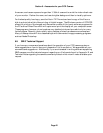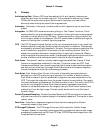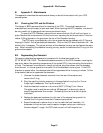
Appendix C - Capturing a Good Flat Field
Page 53
C. Appendix C - Capturing a Good Flat Field
This appendix describes how to take a good flat field. A good flat field is essential for
displaying features little brighter than the sky background. The flat field corrects for
pixel non-uniformity, vignetting, dust spots (affectionately called dust doughnuts), and
stray light variations. If the flat field is not good it usually shows up as a variation in
sky brightness from on side of the frame to the other.
C.1. Technique
The first consideration in capturing a flat field is to use the telescope-CCD combination
in exactly the configuration used to collect the image. This means you probably have to
capture the flat field at the telescope. Do not rotate the head between image and flat
field, since the vignetting is usually slightly off center. Do not be tempted to build a
little LED into the telescope or camera for doing flat fields; it doesn't work at all. The
dust debris shadows would be different!
Arrange a light source such as a flashlight, two white cards, the telescope and
CCD as shown in Figure D-1.
Figure D-1: Flat Field Geometry
Flashlight
Flat White
Surface
Flat White
Surface
Telescope
CCD
The key aspects of this geometry are that the reflection off two diffuse surfaces is used,
and the large flat surface is square to the illumination from the small flat surface. When
we do this, the first flat surface is typically a white T-shirt worn by the operator! Take
care that no apparent shadows are cast onto the larger flat white surface. Use an
exposure at the camera that yields an average light level equal to about half of full scale.


















